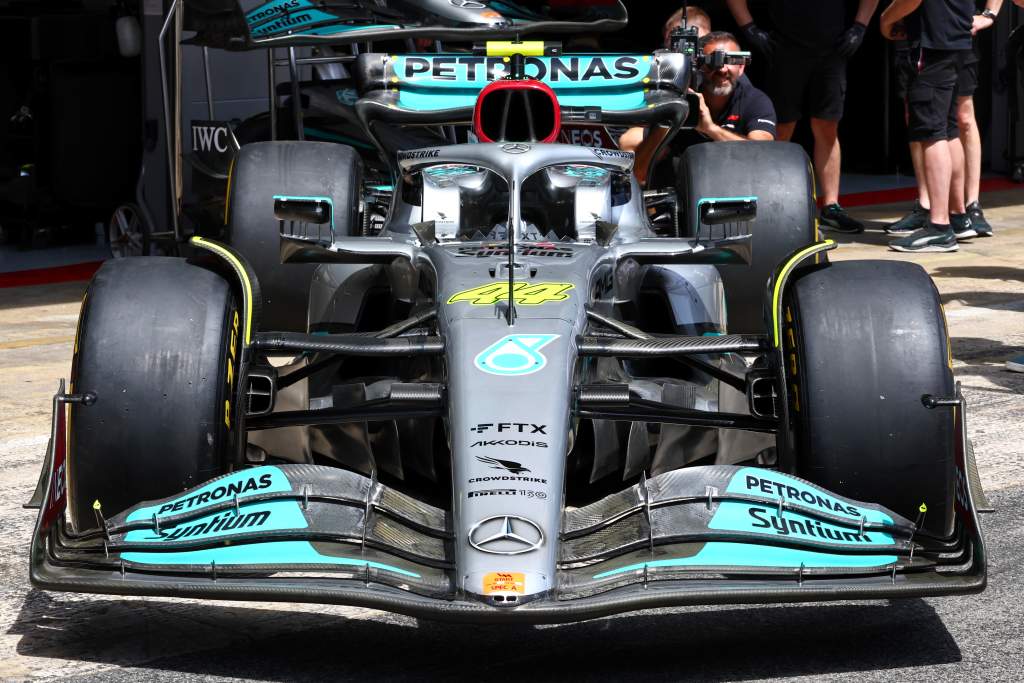Up Next

Mercedes has a Formula 1 upgrade package for the Spanish Grand Prix, which includes a modification to the floor.
The team completed a 100km filming day at Paul Ricard prior to arriving in Barcelona for the grand prix weekend where these parts will have been trialled. But if I were to research porpoising problems, Paul Ricard with its billiard-table-smooth surface is a strange track to choose.
I can’t see many major changes with this Mercedes package. There is a small change to the camber on the front-wing endplate. As this was a new component in Miami, this is simply a question of optimisation after collecting some circuit data.
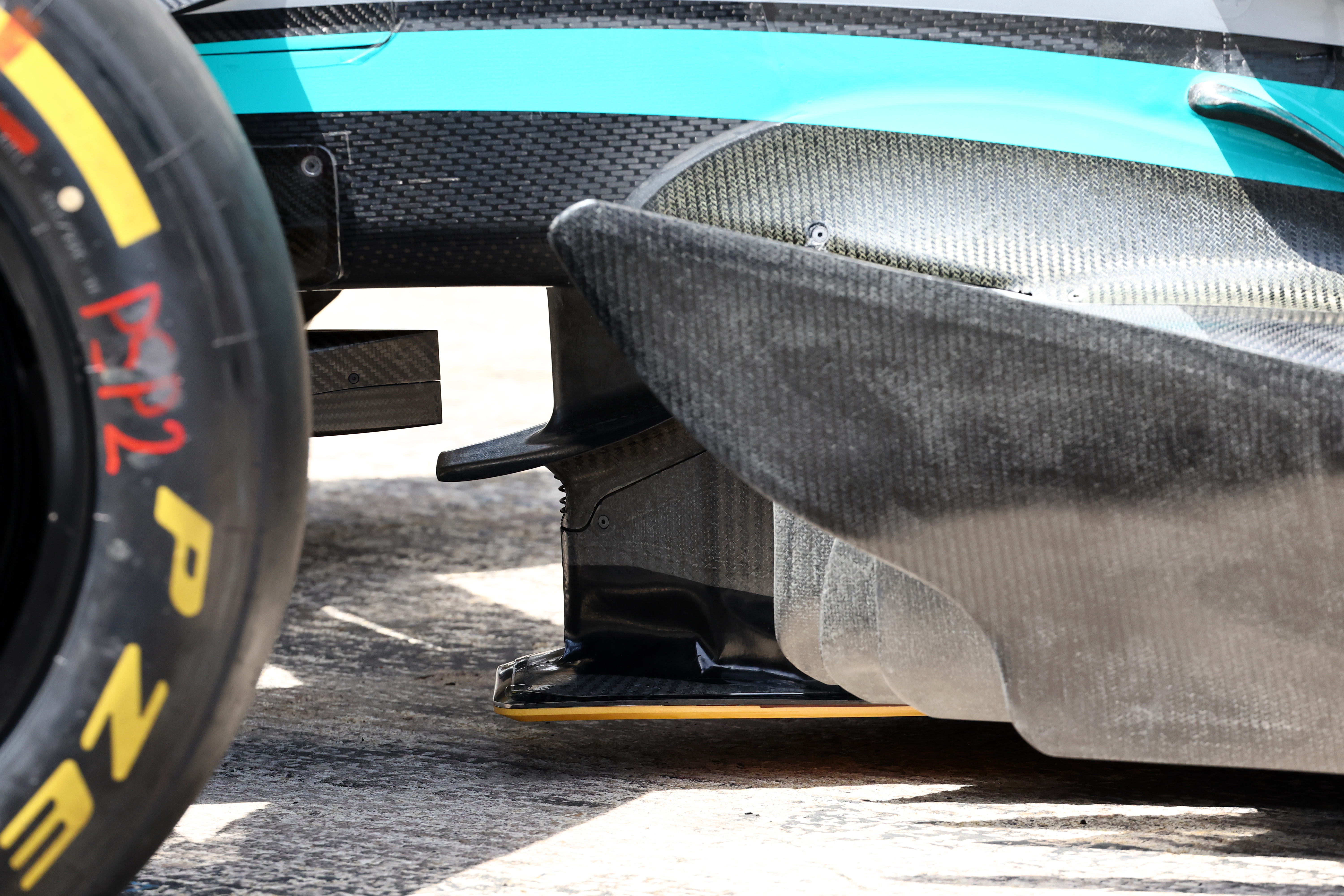
Mercedes has also added a small dive plane in the chassis keel area, just above the floor tongue.
This is similar to what some others run. It slightly realigns the airflow and sets up a vortex to strengthen the flow characteristics where it enters the underfloor at the centre of the car.
There are also some changes to the outer edge of the floor. It looks like the middle third has an adjustable section (circled in red).
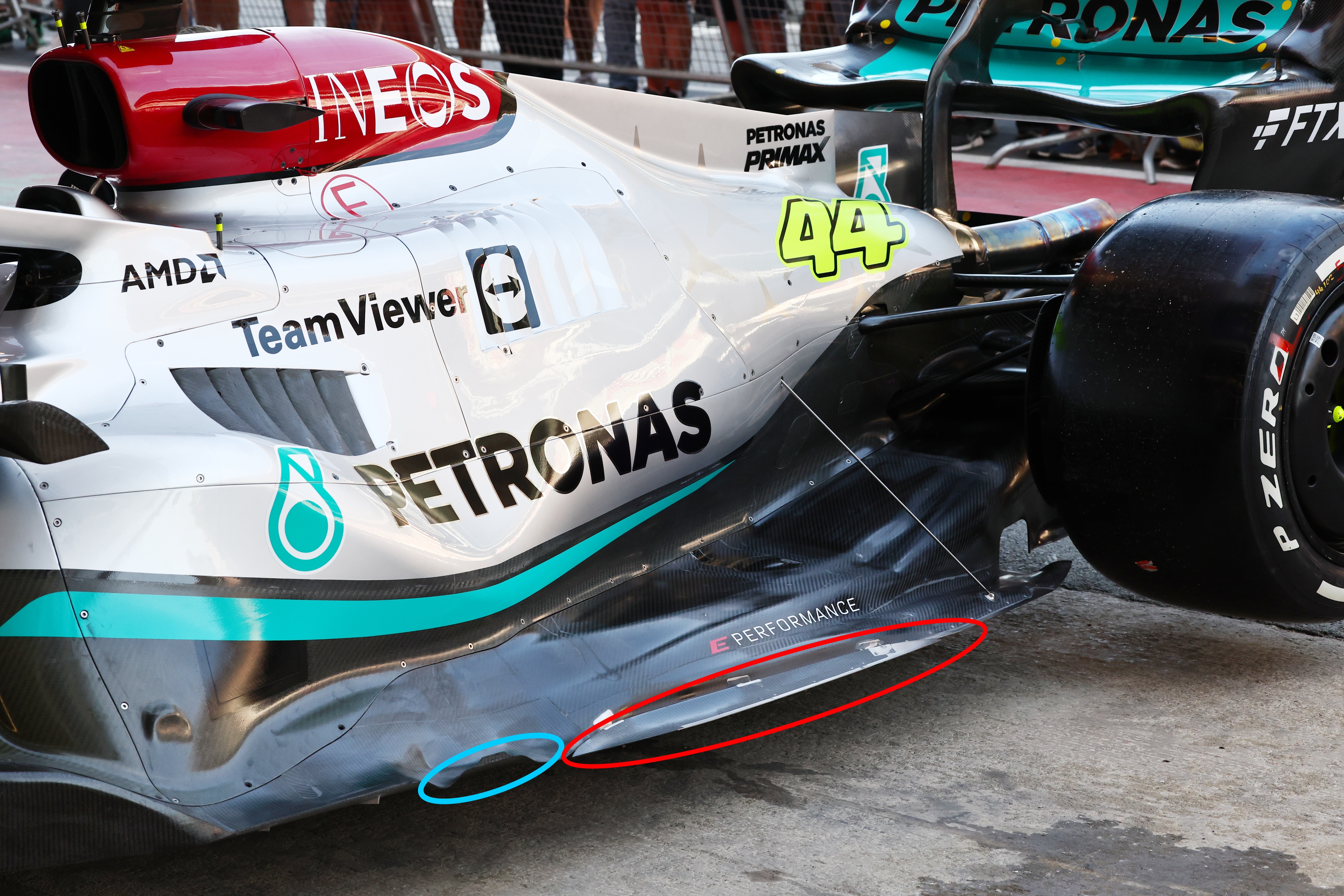
At the moment, it is in its lowest position with the outer edge in line with the edge of the floor. But the way it is mounted looks like it could be increased in angle to set up a stronger vortex to help seal the floor further rearwards.
Mercedes still doesn’t look like it is maximising the potential of the front corner of the floor, which means to get the total downforce up to where they think it should be they have to try to get more out of the rear section.
It has two small separated outlets at the ends of the forward turning vanes on the underside of the floor. It has also added a small gurney flap (circled in blue below) on the top edge of one of these.
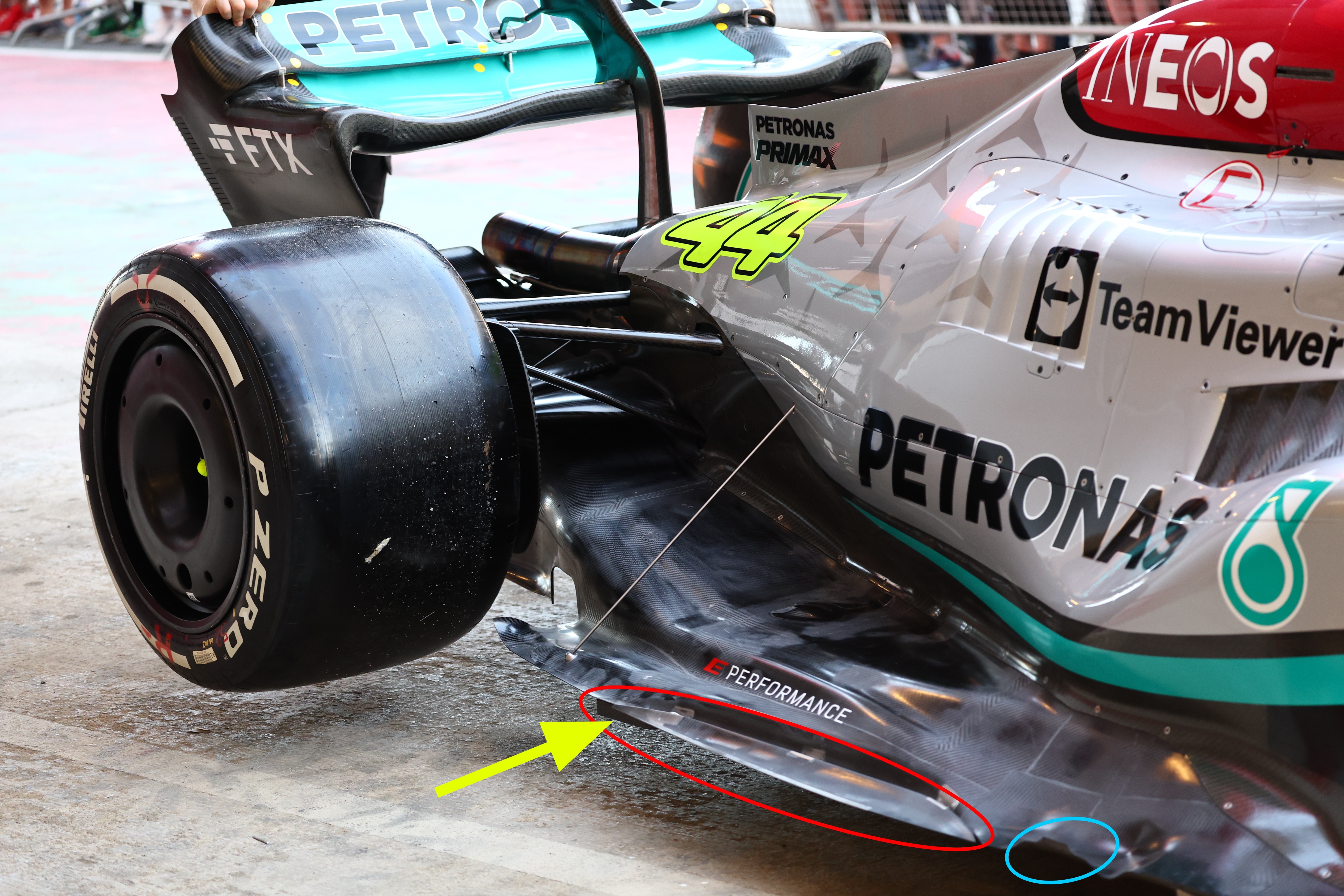
This is a positive, but it’s a bit like a drop in the ocean. It’s not going to make or break the performance of that part of the underfloor.
Also, underneath just in front of the rear tyre it looks like Mercedes has a small splitter (yellow arrow) on the underside of the outer foot of the floor.
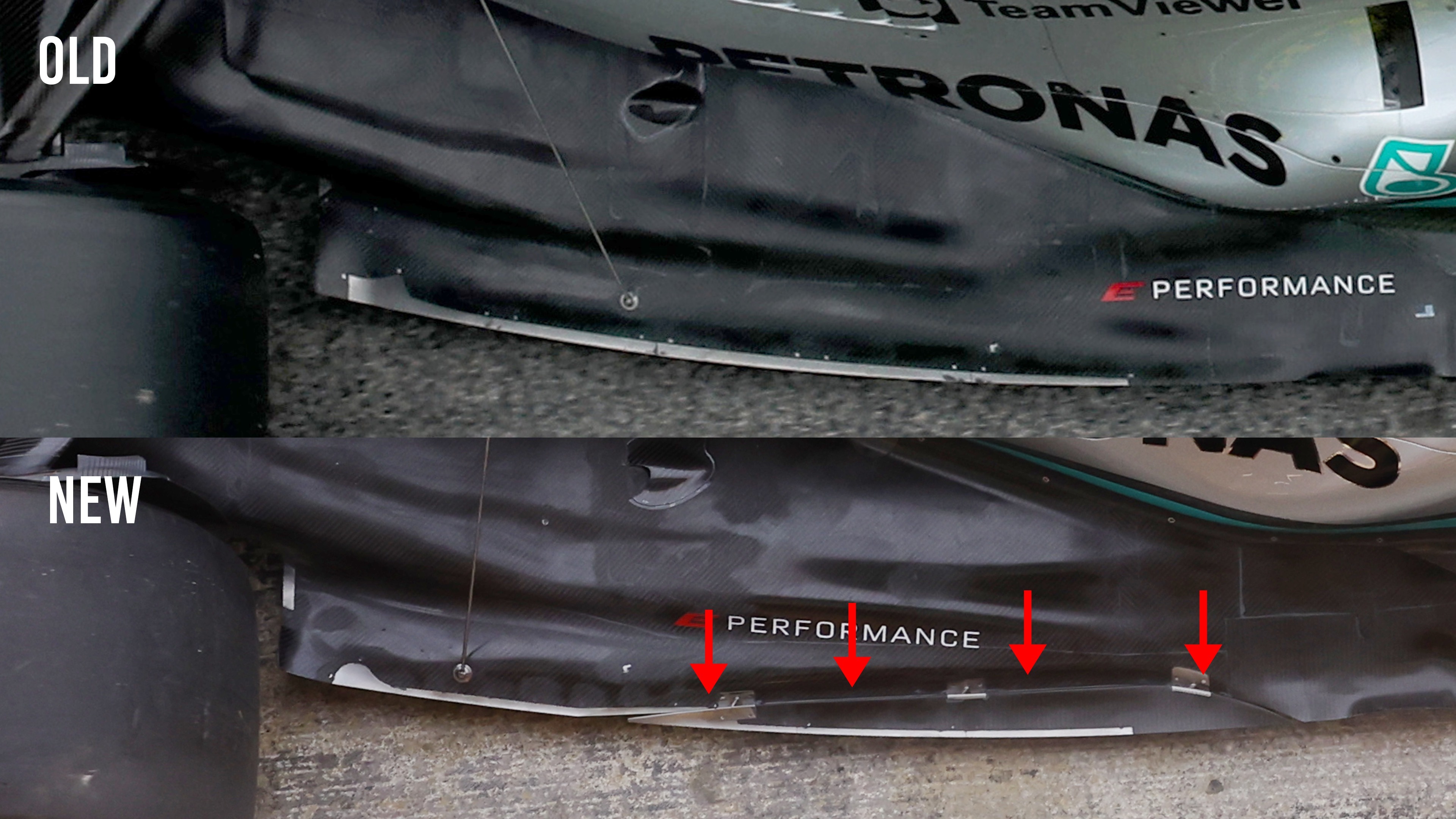
I’m not completely sure what you can get away with in that area, but if it is acceptable then it will also help the performance of the underfloor when running a slightly higher ride height that allows the foot area of the floor to be kept further away from the track surface.
Raising the car to reduce the high-speed porpoising means you lose downforce right through the speed range. Having something like this will come into play more at high speed, when the car is low to the ground because of the high aero loads.

At the rear of the car, Mercedes have what I would call a more ‘brutal’ set of turning vanes on the inner face of the rear brake ducts.
These help to seal the vertical sides of the diffuser, but more importantly, they produce their load directly on the tyre contact patch without having to go through the suspension.
This allows you to run a slightly softer vertical stiffness set-up.
I’m sure Mercedes is still experimenting and will continue doing that during Friday practice, so we need to see what it ends up running for practice three on Saturday.
By that time, you are pretty committed to what you will use in qualifying and then the race.


